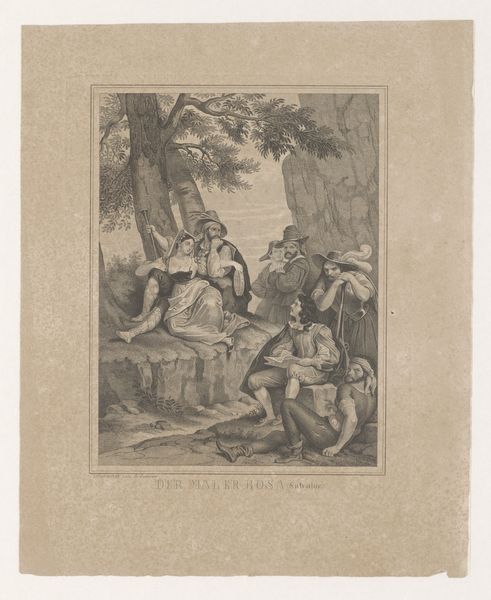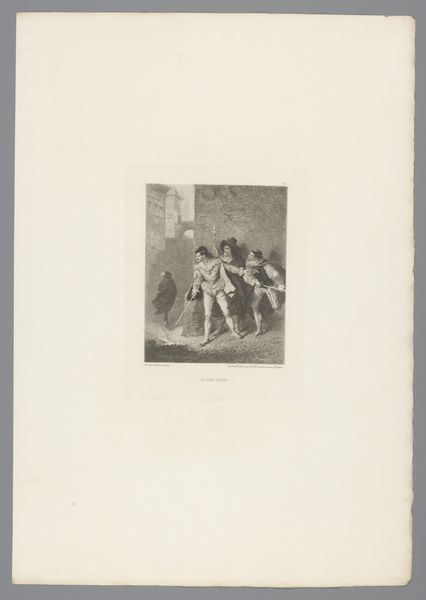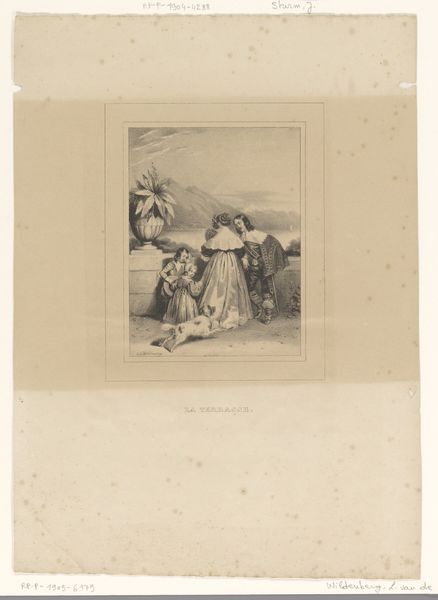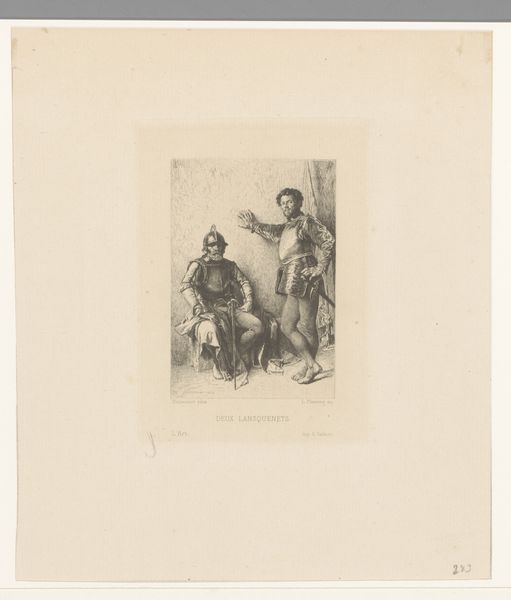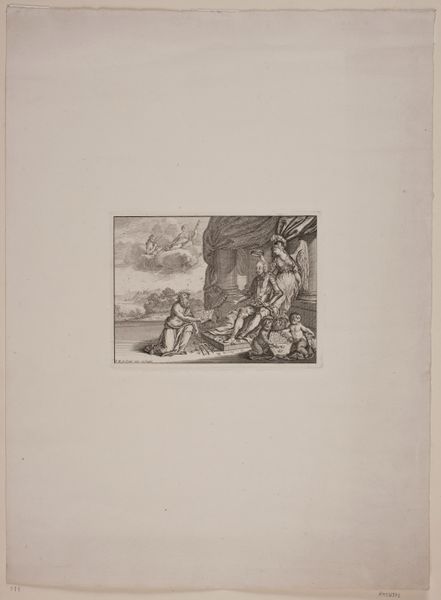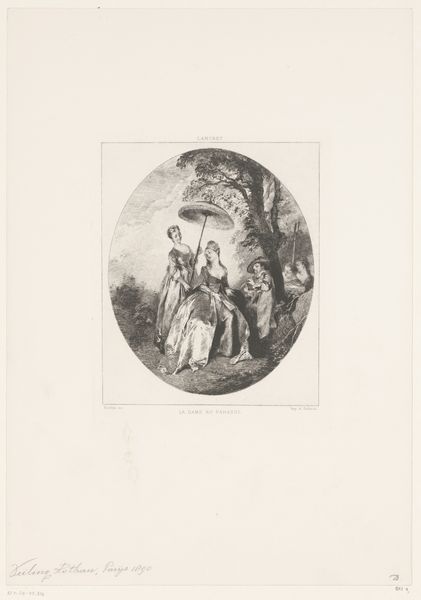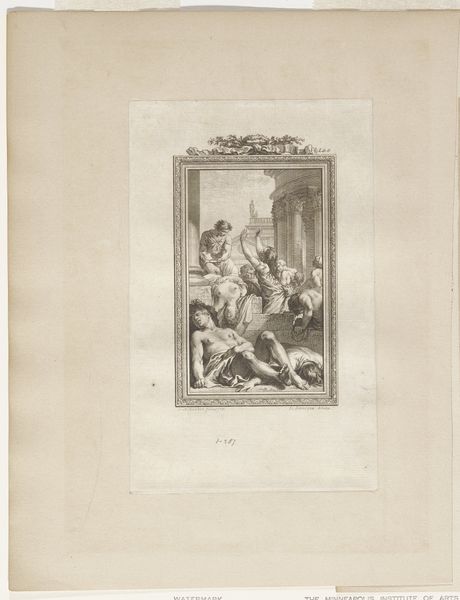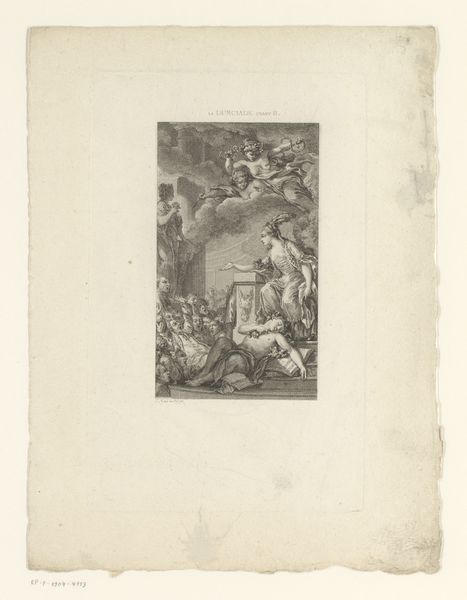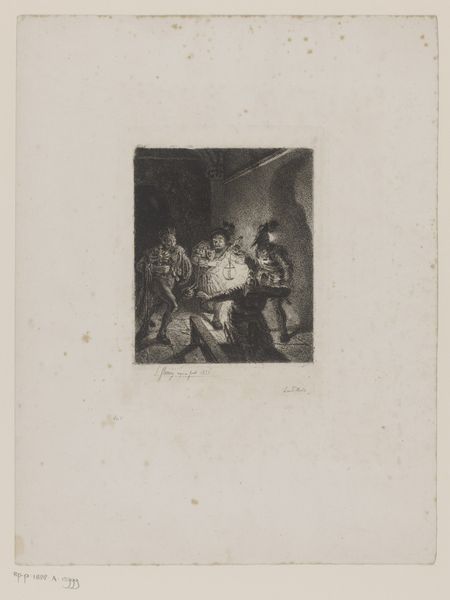
print, etching
#
pencil drawn
#
photo of handprinted image
#
aged paper
#
toned paper
#
light pencil work
#
ink paper printed
# print
#
etching
#
pencil sketch
#
old engraving style
#
watercolour illustration
#
watercolor
Dimensions: 5 11/16 × 4 7/8 in. (14.45 × 12.38 cm) (sheet)13 13/16 × 10 5/16 in. (35.08 × 26.19 cm) (mount)
Copyright: Public Domain
Curator: Welcome to the Minneapolis Institute of Art. Today, we’ll be discussing an etching by Pieter Rodermondt entitled "A Supplicant," created sometime in the 1630s or 40s. Editor: This is intriguing! The somber mood is palpable, despite the diminutive scale. There’s an air of mystery—a shaded tableau that invites speculation. Curator: Indeed. Note the composition. A cluster of figures are arranged asymmetrically on a low platform. Their faces are mostly obscured by shadow and headwear. Editor: Precisely. The heavy shadowing around the faces lends them an almost mythical anonymity. Look at the supplicant figure himself: notice his vulnerability, which is powerfully rendered. In many cultures, kneeling represents a significant act of submission or reverence. Curator: Certainly. The kneeling posture can be read in various ways depending on cultural context. It suggests hierarchy, but perhaps also mercy or judgment. We also can't ignore the columns, they add verticality, disrupting the horizontal grouping, adding an implied depth which contributes to its architectural complexity. Editor: Yes, the architectural elements suggest an indoor setting of importance or power. Perhaps a court or temple? That little dog in the lower-left, what significance might it have? A pet, an allegorical symbol? Curator: Its inclusion could symbolize loyalty, domesticity intruding into a space of political maneuvering, providing contrast within the scene, a moment of levity through it's scale contrast with the other elements. Editor: True. Rodermondt employs very faint lines to build up shadow, lending an ethereality that amplifies the emotive nature. Curator: By deliberately leaving large portions ambiguous, Rodermondt compels the viewer to engage in interpretation. It’s in these liminal spaces of meaning that the work transcends representation. Editor: Absolutely, and those open spaces amplify the potency and allure that will continue to entice viewers for decades. A fantastic conversation! Curator: Agreed. A worthwhile dive into the formal aspects and potential symbolic depths of this etching.
Comments
minneapolisinstituteofart almost 2 years ago
⋮
This etching apparently shows an unidentified literary or historical scene, possibly from the Bible. An old man kneels pleading his case, before a high official who sits on a throne. A young man in a feathered cap and a bent-over old women witness the action. It is the work of Pieter Rodermondt, an artist from The Hague who was keenly interested in the art of Rembrandt. The Supplicant employs several Rembrandtesque devices. The figures are animated and dressed in exotic clothing. With cocked heads and leaning postures they seem to be considering a knotty issue. The artist freed the men from static poses by drawing them with broken contours and selectively allowing their forms to dissolve into light. Strong chiaroscuro contrasts heighten the drama. The architecture is like a stage set, arbitrary, and not convincingly logical. Though not the breed that Rembrandt normally depicted, a small dog enlivens the foreground and adds to the sense of space.
Join the conversation
Join millions of artists and users on Artera today and experience the ultimate creative platform.

